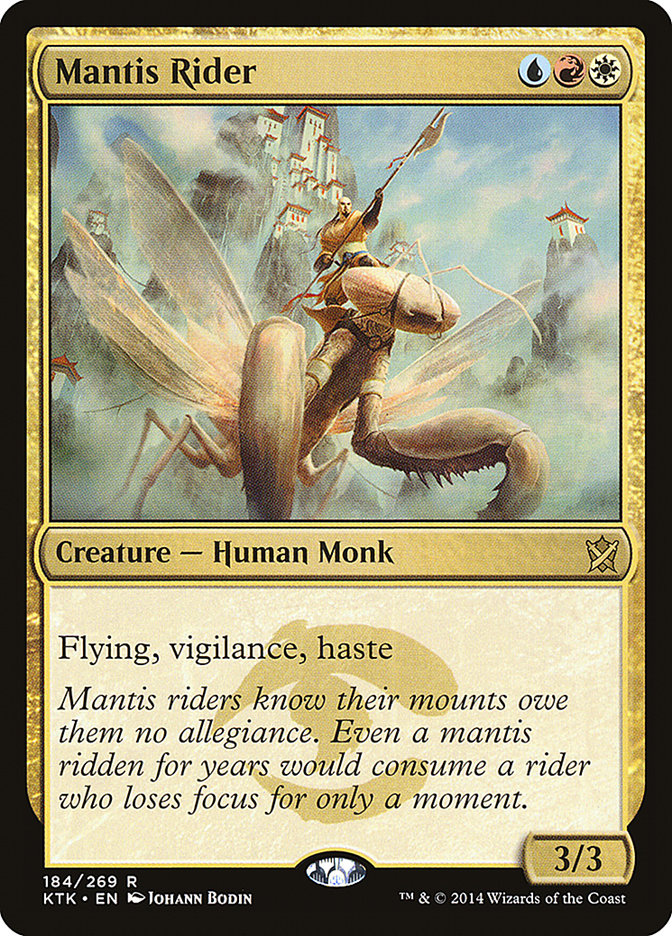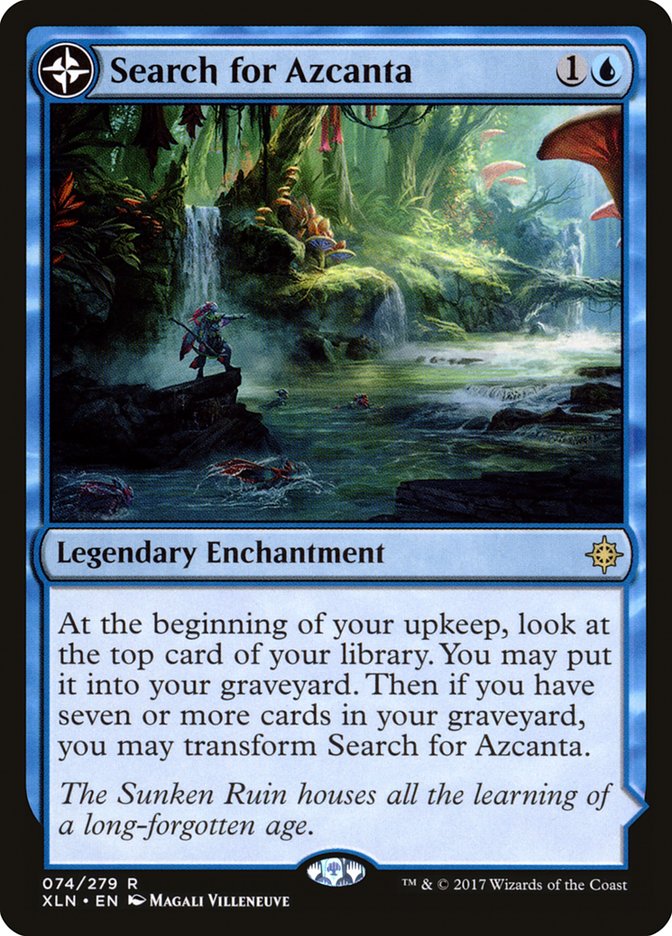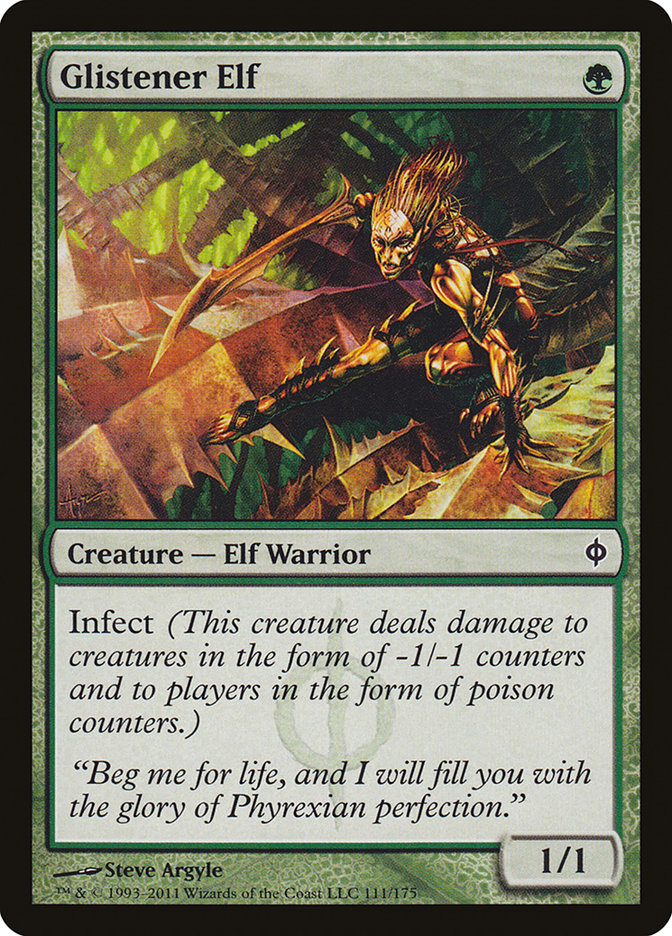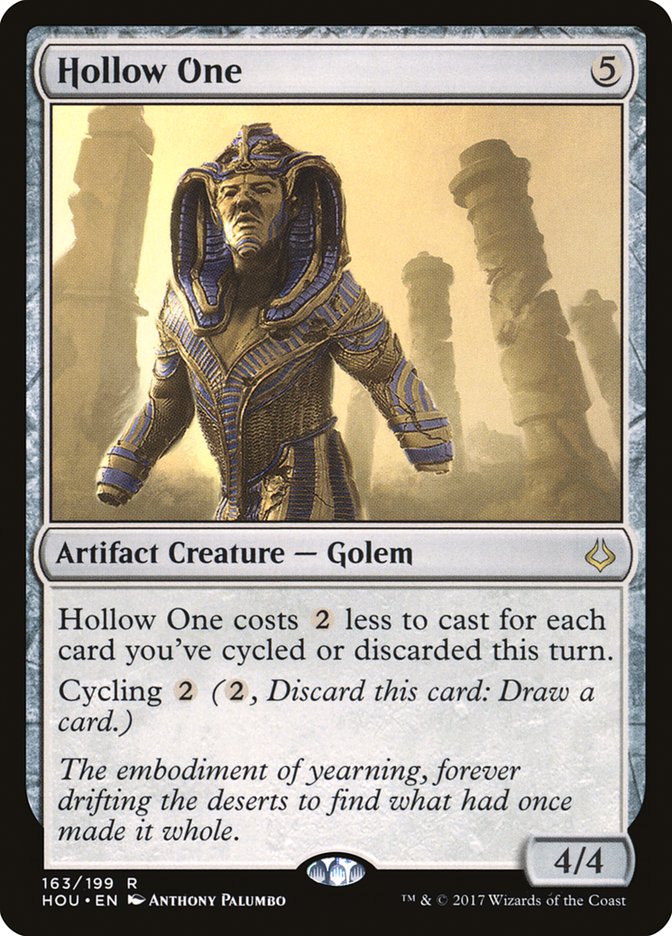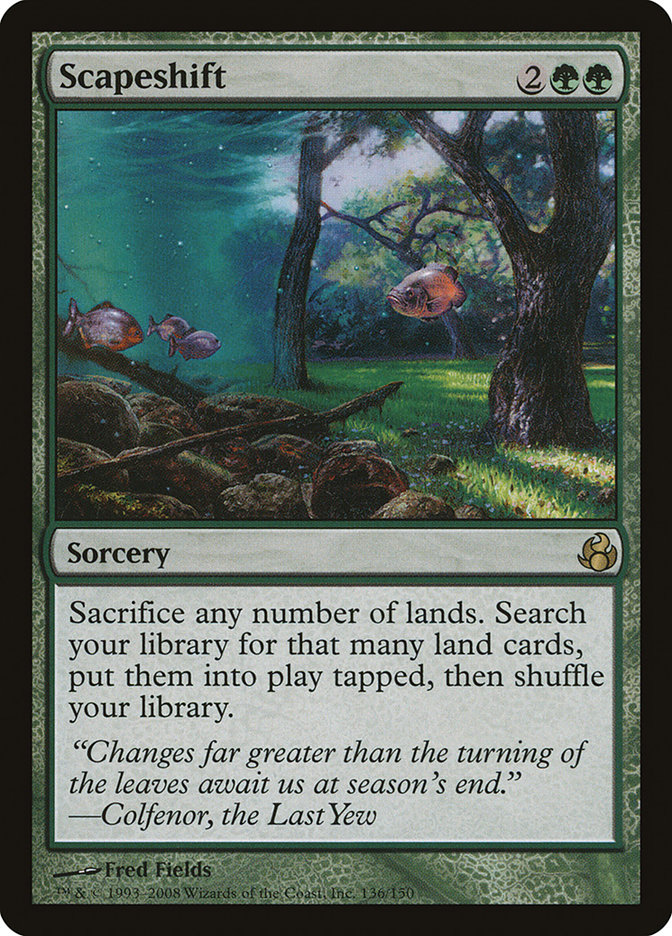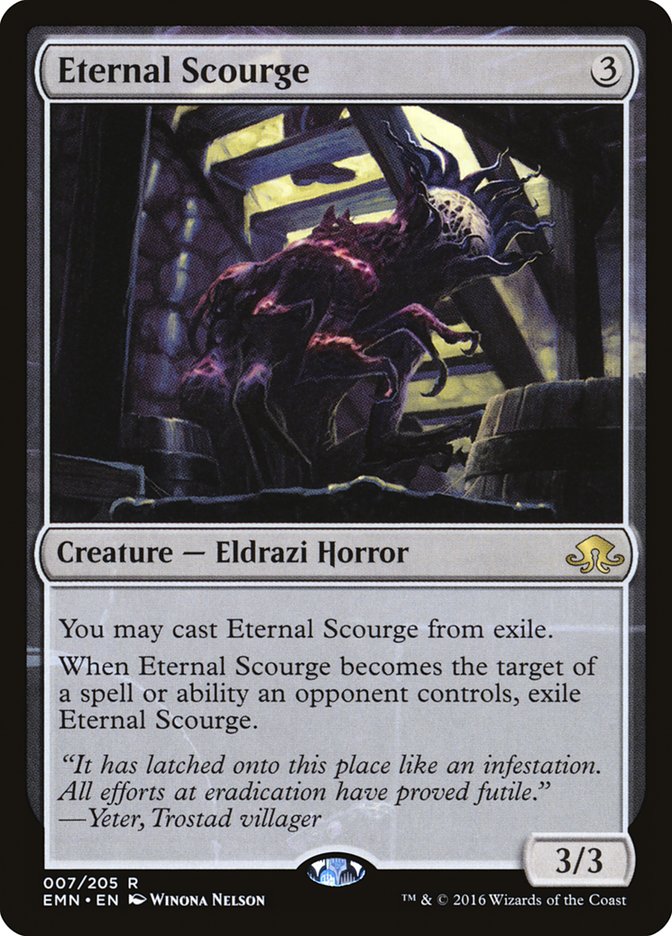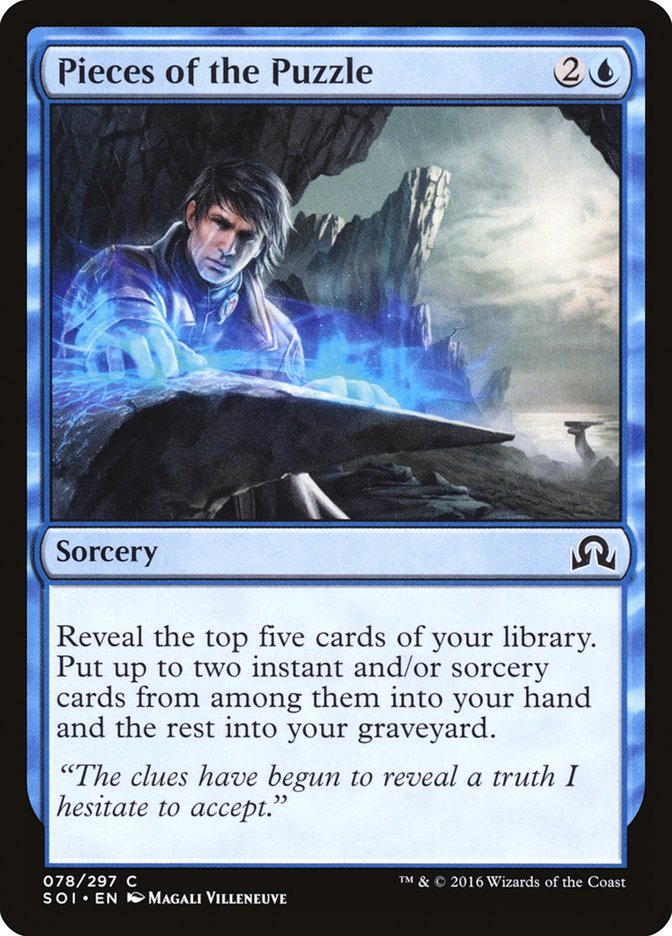Keeping up with Modern is simultaneously surprisingly easy and surprisingly difficult. Fundamental facts about the format change slowly, and institutional knowledge is very valuable, which makes it relatively easy to keep up with once you’ve learned its ins and outs the first time, but it’s difficult to begin because the format is so vast, both in terms of the numbers of cards that are legal and the number of different archetypes people actually show up with.
I believe the Team Modern Super League is up to 35 different archetypes submitted, and that’s an event full of competitive players with teammates to keep really crazy or bad ideas in check, and new archetypes show up every week, so that number can reasonably be expected to continue to go up. That’s pretty crazy. With a format that large, any time a new deck comes up or people start building a deck differently, there are an enormous number of matchups that need to be evaluated to fully understand its place in the metagame.
To help keep up with what’s happening in Modern right now, I’ll use my institutional knowledge to discuss how to beat and what to avoid playing against each deck from Top 8 of Grand Prix Phoenix.
1st Place: Humans
Creatures (37)
- 4 Meddling Mage
- 1 Dark Confidant
- 4 Noble Hierarch
- 1 Mirran Crusader
- 3 Phantasmal Image
- 4 Champion of the Parish
- 3 Thalia, Guardian of Thraben
- 4 Mantis Rider
- 4 Reflector Mage
- 4 Thalia's Lieutenant
- 4 Kitesail Freebooter
- 1 Dire Fleet Daredevil
Lands (19)
Spells (4)

What to play against Humans:
The absolute best cards you can cast against Humans are Snapcaster Mage and Lightning Bolt, especially in Jeskai Control.
With the unbanning of Jace, the Mind Sculptor and Bloodbraid Elf, Lightning Bolt, already the most-played card in Modern, has resurged in popularity. Despite that, Humans won the Grand Prix. Why? Because Lightning Bolt isn’t enough.
Humans matches up pretty well against green creatures because Champion of the Parish is often bigger, Mantis Rider flies, and Reflector Mage is, well, self-explanatory. Bloodbraid Elf lines up really poorly against Thalia, Guardian of Thraben; if you don’t have an extra mana and you cascade into a noncreature spell, you don’t get to use it, and then the 3/2 body gets bricked by the 2/1 first striker. And Jace, the Mind Sculptor? Thalia again makes that pretty hard to cast, and once you do, well, you’d better hope there isn’t a Mantis Rider around.
However, if you’re using a variety of cheap removal spells like Lightning Bolt, Path to Exile, and Lightning Helix to slow them down and Supreme Verdict to clean up, especially if your card advantage is something like Ancestral Vision or Search for Azcanta rather than Jace, the Mind Sculptor, you’re in great shape against this deck.
This is more of a reason why Bloodbraid Elf’s unbanning was ultimately so good for Humans. Jeskai’s removal can line up poorly against Tarmogoyf, since it’s too big to Bolt and cheap enough that using Path to Exile early offers your opponent a meaningful advantage, and Jund grinds so well with Liliana of the Veil, Kolaghan’s Command, and Bloodbraid Elf that it can be hard for Jeskai to pull ahead and stay ahead, and so the resurgence of Jund keeps the natural predator of Humans away.
Of course, there’s no deck in Modern that only loses to one archetype, and there are other ways to beat Humans. I haven’t tested this, and I don’t know for sure, but I’d strongly suspect that Infect and Hexproof are both great strategies against Humans. Humans is a linear deck with minimal interaction, which means that it can be outraced. In general, it uses Thalia, Guardian of Thraben, Kitesail Freebooter, and Meddling Mage to stop people from beating it with fast spell combo, but against creature decks, it has to hope its creatures outmatch the opponent’s creatures.
As it happens, thanks to Champion of the Parish, Thalia’s Lieutenant, and Reflector Mage, they often do, but Infect and Hexproof play unusual creature games. Evasion for Infect and making a creature absolutely huge for Hexproof make creature combat a tricky proposition for a defending player, and these decks use cheap and interchangeable spells to support their creatures, meaning neither is too crippled by Thalia, Guardian of Thraben or Meddling Mage.
I’d also expect that Hollow One might have a good matchup by doing strong things with creatures, especially because Grim Lavamancer is one of the best sideboard cards you can have against Humans, but I really don’t know that deck well enough to have any confidence here.
Elves would be another example of a creature deck that punishes people for failure to interact that I’d expect to crush Humans, so I suppose what you’re looking for categorically is linear creature decks that go faster or bigger than Humans.
What not to play against Humans:
Non-interactive spell-based combo. This is kind of a nightmare matchup for a deck like Krark-Clan Ironworks, since all of the disruptive creatures; Thalia, Guardian of Thraben; Kitesail Freebooter, and Meddling Mage line up perfectly, and Ironworks has limited ways of dealing with them.
If you have to play a deck like that, and you want to have a chance, you’ll need to pack plenty of answers. Pyroclasm is the highest-impact card available to pick up points here (probably even better than the comically narrow Human Frailty). Anger of the Gods and Engineered Explosives are acceptable alternatives. Izzet Staticaster and Grim Lavamancer are great if you can support them. (Grim Lavamancer in Lantern Control? I may have just blown my own mind, but it seems pretty narrow.)
2nd Place: Jund
Creatures (15)
Planeswalkers (5)
Lands (24)
Spells (16)

What to play:
Burn, Tron, Hexproof, Scapeshift, Amulet, Eldrazi.
That’s a random list of decks. What’s going on here?
Jund is excellent at grinding, so you want to avoid doing that. Don’t show up and try to out-value them. It’s just not going to happen. You want to either invalidate their angles of attack (Burn, Hexproof) or go way over the top (big mana decks).
Their hand disruption and respectable clock can make things hard for combo decks, but big mana decks can just build up their lands and then topdeck extremely well, and it’s hard for Jund to do anything about the top of their opponent’s library containing a powerful spell. Scapeshift is the worst of these because it’s a critical mass deck, which is to say it just needs a certain total number of cards to win and Liliana of the Veil can do a decent job of preventing it from reaching that critical mass, but Primeval Titan is an extremely good card against Jund.
As for Eldrazi, I’m specifically thinking of the Serum Powder Eldrazi deck with Eternal Scourge, as that card in particular seems like a big problem for Jund, and getting value all over the place with its lands makes trading resources less appealing (especially Sea Gate Wreckage). Beyond that, Reality Smasher as a card lines up pretty well against Jund as long as you can keep Liliana from answering it and don’t let Tarmogoyf get too big, but the Serum Powder Eldrazi deck is especially great against Tarmogoyf because it’s already planning to keep graveyards exiled with Relic of Progenitus and Scavenger Grounds, ensuring that the Eldrazi will be the biggest creatures around.
What not to play:
As I mentioned, you don’t want to try to out-value Jund. Well, okay, you actually might be able to be competitive if you’re a Lingering Souls deck like Abzan or Mardu Pyromancer, but even there I like the Jund side. For the most part, blue value decks have a surprising amount of trouble with Jund, as do most linear decks, especially those relying on assembling combinations of permanents, so decks like Elves, Lantern, and Taking Turns would all do very poorly against Jund.
What can you do to fix a bad matchup against Jund? Remarkably little, honestly. The deck isn’t vulnerable to specific cards. Adding raw card advantage to your sideboard, cards like Harmonize or Ancestral Vision, might be your best bet.
3rd Place: Ironworks Combo
Creatures (8)
Lands (18)
Spells (34)

What to play:
This is a linear fast combo deck with very limited interaction. Trying to answer its cards with counterspells or removal isn’t great because the deck has a lot of redundancy and card advantage, but white cards don’t have to do that. White has an extremely long list of cards that Ironworks has to struggle to answer before it can function:
Phyrexian Revoker isn’t white, but it has been known to hang out with some of those cards. (Unlike Pithing Needle, Phyrexian Revoker can shut down Krark-Clan Ironworks itself, making it an effective card against this strategy, while Pithing Needle is far less effective; the best it can do is protect your other disruption from Engineered Explosives.)
It really doesn’t matter what deck you’re playing. What matters is how many of these cards you can get on the battlefield.
Alternatively, faster combo like Storm or Infect could be well-positioned here. Ironworks is a Turn 3/4 (leaning 4) combo deck. You can race that in Modern.
What not to play:
Slower combo, or really slower anything that can’t meaningfully slow them down. I’d expect a deck like Jund that can slow this deck down with artifact removal and Thoughtseize to have a solid chance, especially if they can cast a Turn 2 Tarmogoyf, but I don’t think it’s the best place to be. What you really don’t want is to be playing something like Tron or Scapeshift. Basically, if you have a good Jund matchup, you probably have a bad Ironworks matchup, which is precisely why this deck did well this weekend.
4th Place: Bant Knightfall/Counters Company
Creatures (27)
- 3 Birds of Paradise
- 1 Eternal Witness
- 4 Devoted Druid
- 3 Noble Hierarch
- 4 Knight of the Reliquary
- 1 Qasali Pridemage
- 2 Reflector Mage
- 2 Duskwatch Recruiter
- 3 Spell Queller
- 1 Walking Ballista
- 3 Vizier of Remedies
Planeswalkers (2)
Lands (17)
Spells (14)

What to play:
Interaction. I’m legitimately surprised that Vikram did this well with this deck. I don’t think it’s very good right now. Every card in this deck except Knight of the the Reliquary is weak to Lightning Bolt, and Collected Company and a few Jaces don’t add up to that much card advantage. I really can’t imagine that this deck has a decent matchup against Jund, and I’d honestly expect it to struggle against basically any reasonable deck with four Lightning Bolts and four or more other removal spells.
What not to play:
The good news for this deck is that it has a lot of different speedy kills. I’d expect this particular build to do very well against Humans, big mana, and slow combo decks. Access to powerful cards like Kataki, War’s Wage and Eidolon of Rhetoric offers trumps against a lot of faster combo decks, so this deck is actually quite good at racing and might be more favored than I’m giving it credit for against almost every opposing linear deck, which might not be that bad of a spot, even if this doesn’t seem like it would have been a great weekend for the deck to me.
If you’re looking to shore up a matchup against this deck, start with Grafdigger’s Cage and then add creature removal of any sort.
5th Place: Scapeshift (Bring to Light Version)
Creatures (5)
Planeswalkers (2)
Lands (26)
Spells (27)

What to play:
Think Burn, Hexproof, Infect, Storm, Ponza, Affinity.
This is a removal-light control deck with a combo finish, or, viewed differently, it’s a slow combo deck this interactive spells intended to slow the opponent down just enough to win. When I say “slow combo,” I mean this deck is generally looking to win on Turn 5, which means it will be outraced by fast combo unless it can slow them down.
The only tools it has to slow the opponent down are Cryptic Command, Lighting Bolt, one Izzet Charm, Remand, and one Supreme Verdict or Bring to Light for the same. This deck can interact a little with creatures, and it can interact with expensive spells. The easiest way to beat it is with something faster that those methods of interaction are bad against.
What not to play:
Tron and other slow decks that revolve around expensive spells where Remand shines.
Jund, Mardu, and other decks that focus on interacting with the battlefield and struggle to interact with the stack.
Positioning is key with this deck. If you’re poorly positioned, Slaughter Games is probably your best bet.
6th Place: G/W Hatebears
Creatures (30)
- 1 Kitchen Finks
- 4 Flickerwisp
- 4 Noble Hierarch
- 4 Leonin Arbiter
- 3 Mirran Crusader
- 2 Scavenging Ooze
- 4 Thalia, Guardian of Thraben
- 4 Restoration Angel
- 4 Voice of Resurgence
Lands (20)
Spells (10)

See: “1st place, Humans” above.
Kind of joking, but really, both decks play Aether Vial, Noble Hierarch; Thalia, Guardian of Thraben; ways to make large creatures, and fliers. Hatebears uses Leonin Arbiter with Ghost Quarter and Tectonic Edge as its additional disruption instead of Meddling Mage and Kitesail Freebooter and it uses Path to Exile instead of Reflector Mage, but at the end of the day, these differences are largely cosmetic.
Both decks are relatively strong and relatively weak against more or less the exact same archetypes with minor variations in precisely how strong. For example, Humans is better Game 1 against Ironworks Combo because Meddling Mage is great, but G/W Hatebears is better against Tron because attacking lands is great.
7th Place: Mono-Green Tron
Creatures (9)
- 3 Wurmcoil Engine
- 2 Ulamog, the Ceaseless Hunger
- 1 World Breaker
- 1 Emrakul, the Promised End
- 2 Walking Ballista
Planeswalkers (6)
Lands (15)
Spells (30)

What to play:
Fast combo is always going to be the best approach. Ad Nauseam, Storm, Ironworks, Infect, Affinity, Grishoalbrand, Counters Company…it doesn’t really matter, especially if you can win through a Karn activation on Turn 3, because they’re not really doing anything better than that. Even slightly slower combo decks like Scapeshift of all sorts are well-positioned here. Tron simply isn’t set up to interact before Turn 3 or to race, so if you’re just trying to end the game, they won’t really be able to do anything about it.
What not to play:
Anything slower. You might be able to get away with U/W Control with Field of Ruin and Spreading Seas, but for the most part, if you’re trying to slow the game down in any way, you’re just making it easier for them. Tron exists in a weird place as far as what it does to incentives; it beats all the fair/interactive decks and loses to all the unfair/linear decks. This is likely the best argument for banning it: it creates an incentive structure that pushes the format away from the kinds of games most players enjoy.
Crumble to Dust, Disdainful Stroke, and Ceremonious Rejection are your best tools to shore up this matchup.
8th Place: R/G Eldrazi
Creatures (26)
- 4 Noble Hierarch
- 4 Bloodbraid Elf
- 1 Scavenging Ooze
- 1 Endbringer
- 4 Eldrazi Obligator
- 4 Reality Smasher
- 4 Thought-Knot Seer
- 4 Matter Reshaper
Lands (22)
Spells (12)

What to play:
Think Lantern, Hollow One, Scapeshift, Humans, Infect, Hexproof, Affinity.
This is basically like other Eldrazi decks, except it adds Eldrazi Obligator, which is fantastic against opposing large creatures. This deck is fast, but not “combo fast.” It establishes a real clock, it’s proactive and good at applying pressure, but it’s not winning races against decks built for speed.
What not to play:
Death’s Shadow or Jund. This deck’s creatures line up well against Lightning Bolt. That’s basically the biggest thing this deck has going for it, so it will do relatively well against Lightning Bolt decks and decks where large creatures and Eldrazi Obligator shine.
The other thing to note about this deck is that its sideboard is remarkably good, especially against decks that it’s bad against in Game 1, which makes a lot of matchups hard to evaluate confidently. It will be strategically disadvantaged in Game 1often but then make up for it in sideboarded games, if it can find one of its respectable but not huge number of sideboard cards. This leads to the deck having relatively well=rounded matchups against the field.
***
It can be difficult to expect in any given Modern tournament, and looking to recent Modern events only gets you so far, since so many people don’t change Modern decks much or always choose between the same two or three decks (that’s roughly the kind of player even I and most other pros are, honestly).
But when you’re trying to piece the format together, this is the way you have to look at things, and this is the kind of consideration that leads to, for example, Matt Nass identifying this weekend as a great weekend for Ironworks (though I haven’t discussed his reasoning for testing the deck, so I’m not actually sure if he thought through precisely why it would win now, or if he just started testing it on Magic Online and found that it won a lot without realizing precisely why that was happening).
I hope all this is correct and helpful, but there are certainly decks and matchups here that I don’t know very well, so feel free to speak up if you think there’s a matchup I’ve misevaluated.


